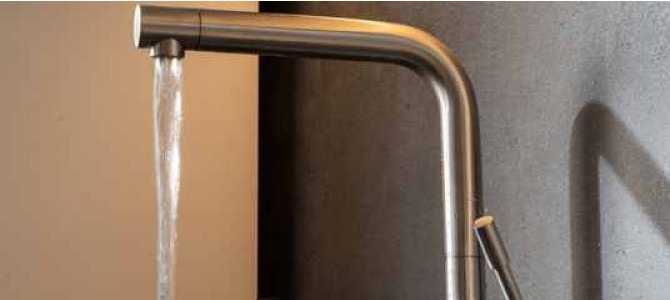 Shopping Cart
Shopping Cart
17 March 2023
How to save water in the kitchen

Water is a precious resource that we often take for granted, but it's becoming increasingly important to conserve it. The kitchen is one of the most water-intensive areas in a home, with cooking, cleaning, and dishwashing all contributing to water usage. However, there are several ways you can save water in the kitchen without sacrificing your daily routine.
10 ways to save water in the kitchen
Saving water in the kitchen doesn’t mean you have to make sweeping changes to the way you go about your day-to-day life. Like other areas around the house, a few simple changes can make a big difference and really help to cut down on your water usage in the kitchen, recycling a lot of the water you consume in the kitchen and using it in other areas around the house. Here are 10 water-saving tips in the kitchen:
1. Rinse fruits and vegetables in a bowl
Rinsing fruits and vegetables is a necessary step to remove dirt and pesticides, but it can also be a significant source of water waste. Instead of rinsing them under running water, use a bowl or basin filled with water to wash your produce. You can reuse the water for your plants or garden.
2. Wait for a full load before running the dishwasher
Dishwashers are a significant source of water usage in the kitchen. To save water, wait until you have a full load before running the dishwasher. This not only conserves water but also saves energy by reducing the number of loads you run.
3. Install a low-flow tap
The kitchen tap is one of the most frequently used fixtures in the kitchen, and it can waste a lot of water. Consider installing a low-flow tap to reduce your water usage. These taps use less water without sacrificing performance, so you won't even notice a difference in your daily routine.
4. Fix leaks immediately
A leaky faucet or pipe can waste a lot of water over time, so it's essential to fix leaks as soon as you notice them. Check your pipes and taps regularly for any leaks, and call a plumber if you need help fixing them.
5. Use a broom instead of a mop
Cleaning the kitchen floor can be a messy task, but it doesn't have to be a source of water waste. Instead of using a mop to clean your floors, use a broom to sweep up any crumbs or debris. You can then use a damp cloth to clean up any spills.
6. Choose water-efficient appliances
When it's time to upgrade your kitchen appliances, consider choosing water-efficient models. Look for appliances with the WELS (Water Efficiency Labelling Scheme) label, which indicates the water efficiency of an appliance. Like the energy star rating, the WELS is measured out of six stars.
These appliances use less water without sacrificing performance, so you'll save money on your water bill while also conserving water. Keep an eye on appliances with a high WELS rating and energy efficiency rating to save more.
7. Reuse water when possible
Water doesn't have to be a one-time use resource. When you're cooking or cleaning, try to reuse water whenever possible. For example, if you're boiling pasta, save the pasta water to use as a base for soup or to water your plants. You can also reuse dishwashing water to water your garden.
8. Use the waste disposal sparingly
Waste disposals can be a convenient way to dispose of food scraps, but they also use a lot of water. Instead of relying on your waste disposal, consider composting your food waste. Composting not only conserves water but also provides nutrient-rich soil for your garden.
9. Soak dishes before washing
Instead of letting dishes pile up in the sink, soak them in a basin of soapy water before washing. This softens any food debris or grease, making it easier to clean and reducing the need for water to clean them thoroughly.
10. Don't let the water run
One of the simplest ways to save water in the kitchen is to turn off the tap when you're not actively using it. Whether you're washing dishes or brushing your teeth, turning off the water when you don't need it can save a significant amount of water over time.
In conclusion, the kitchen is one of the most water-intensive areas in a home, but there are several ways you can save water without sacrificing your daily routine.
Kitchen water-saving tips FAQs
How can you save water when cleaning?
Saving water when cleaning is essential for conserving this precious resource and reducing our environmental impact. By using a bucket or broom instead of a hose, fixing leaks, and choosing water-efficient appliances, we can significantly reduce our water consumption.
Reusing water and using a spray bottle to apply cleaning solution are also effective ways to save water when cleaning. Additionally, turning off the tap when not in use is a simple but effective way to save water in the kitchen and other areas of the home. By incorporating these tips into our cleaning routine, we can save water, reduce our environmental impact, and lower our water bills.
What uses the most water on your water bill?
The amount of water usage on your water bill will vary depending on your household's water consumption habits and the local water rates. However, there are a few common sources of high water usage that can lead to high water bills, including irrigation systems, toilets, showers and baths, washing machines and leaks around the home. By identifying and addressing these common sources of high water usage, you can reduce your water bill and conserve this precious resource.
Does the washing machine use a lot of water?
The amount of water used by a washing machine can vary depending on the age and type of machine, as well as the settings used for each load. Older washing machines tend to use more water than newer, high-efficiency models, which are designed to use less water while still effectively cleaning clothes.
Traditional top-loading washing machines can use anywhere from 55 to 170 litres of water per load, while front-loading machines typically use around 50 litres per load. High-efficiency top-loading machines can use as little as 26 litres of water per load, while some front-loading machines use as little as 19 litres per load.
How can you save water on daily chores?
There are many ways to save water on daily chores and reduce our environmental impact. Simple changes to our routines and habits can make a big difference, such as turning off the tap when brushing our teeth, using a bucket instead of a hose when washing our car, and fixing leaks promptly.
Additionally, choosing water-efficient appliances, such as dishwashers and washing machines, and using low-flow showerheads and taps can also help conserve water. By incorporating these practices into our daily routine, we can save water, lower our water bills, and contribute to a more sustainable future.
How do you save water in the sink?
Saving water in the sink is an important way to conserve this precious resource and reduce our environmental impact. There are several ways to save water in the sink, such as turning off the tap while washing dishes or brushing our teeth and using a bowl or plug to rinse fruits and vegetables instead of running water.
Fixing leaks promptly and using a low-flow tap or aerator can also help save water. Additionally, reusing water from cooking or washing dishes to water plants or clean surfaces is a great way to reduce waste and save water in the sink.
